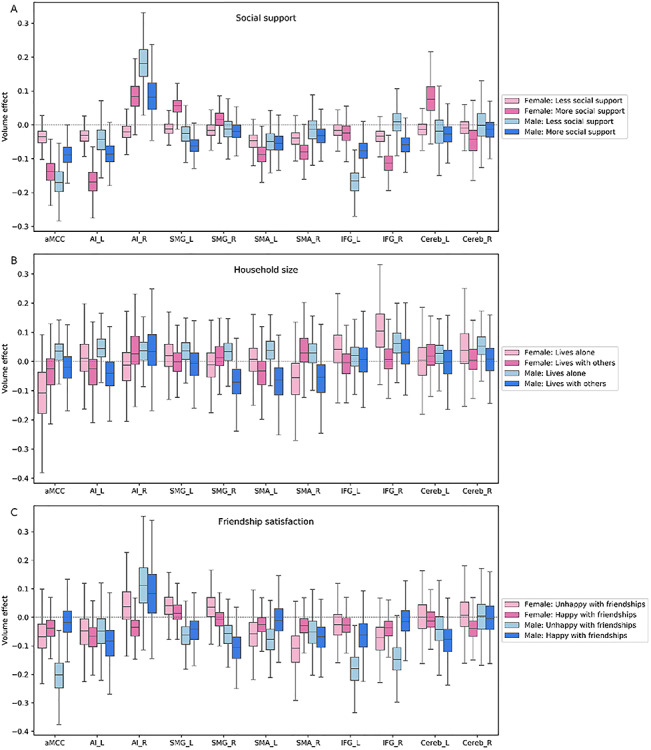Fig. 4.

Population volume effects in the intermediate-level network of the social brain. Boxplots depict four different subgroups in the context of (A) social support, (B) number of people living in the same household and (C) friendship satisfaction. (A) Volume effects were incongruent in the anterior midcingulate cortex (aMCC), left anterior insula (AI_L), left supramarginal gyrus (SMG_L), right supplementary motor area (SMA_R), right inferior frontal gyrus (IFG_R) and left cerebellum (Cereb_L) in women with more social support and in the anterior midcingulate cortex (aMCC), right anterior insula (AI_R) and left inferior frontal gyrus (IFG_L) in men with less social support. (B) Men living with others displayed volume effects in the right supramarginal gyrus (SMG_R) and left supplementary motor area (SMA_L) compared to men living alone. (C) Men who are not happy with their friendships showed large volume effects in the anterior midcingulate cortex (aMCC) and inferior frontal gyrus (IFG). These analyses were conducted in the whole social brain, of which we show obtained marginal posterior distributions for the intermediate network.
